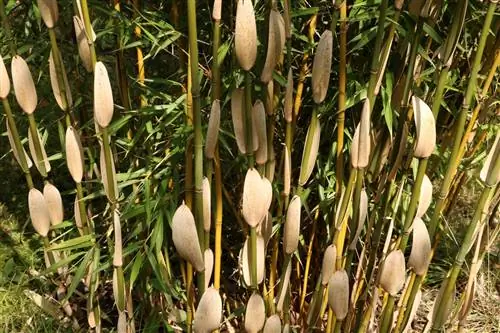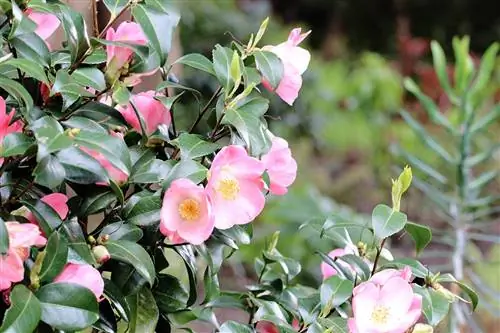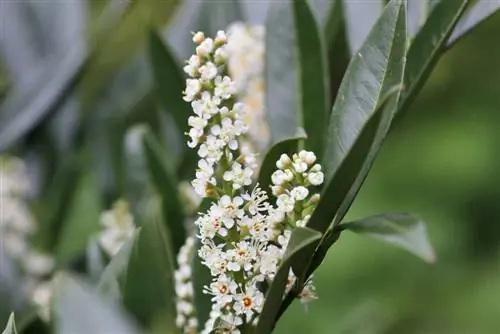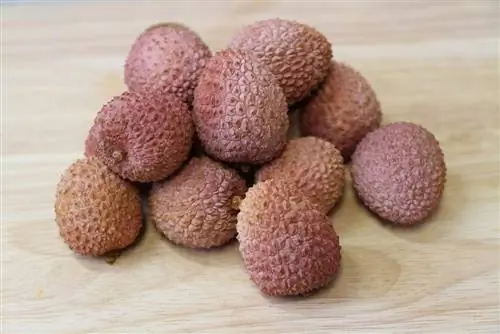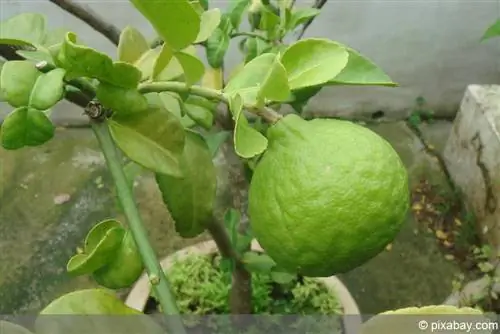- Author admin [email protected].
- Public 2023-12-17 03:39.
- Last modified 2025-06-01 06:48.
Bamboo is becoming increasingly popular in this country. It grows quickly and lushly and is an attractive sight even without flowers. In summer all specimens develop splendidly. But not every species can withstand the frost of winter. With protective measures it can work.
Winter hardiness zones and winter hardiness
There are around 1,500 different species of bamboo worldwide. The offering in our stores is far more modest. However, it includes numerous different types. Not all of them are completely winter-proof. The declared winter hardiness provides information about the sub-zero temperatures a species can survive without harm. Whether it is hardy in your own garden also depends on which winter hardiness zone the region belongs to. The question of frost tolerance should ideally be clarified before planting.
Very hardy species
Bamboo species that are assigned to winter hardiness zones 5 or 6 can root in the garden all year round anywhere in Germany. They can tolerate temperatures down to - 28.8 °C or - 23.3 °C. These include, among others, the following species of the genera Fargesia and Phyllostachys:
- Fargesia denudata
- Fargesia dracocephala
- Fargesia nitida
- Fargesia murielae
- Fargesia robusta ‘Campbell’
- Fargesia sp. 'Jiuzhaigou' I, II, IV and X, 'Jiuzhaigou Geneva'
- Fargesia sp. 'Rufa' and 'Rufa Green Panda'
- Fargesia sp. 'Scabrida'
- Phyllostachys atrovaginata: 'Incense Bamboo'
- Phyllostachys aureosulcata: 'Aureocaulis', 'Harbin Inversa', 'Lama Temple', 'Spectabilis', 'Yellow Groove'
- Phyllostachys bissetii
- Phyllostachys decora: ‘Beautiful Bamboo’
- Phyllostachys heteroclada: ‘Solid Stem’
- Phyllostachys nigra: ‘Henon’
- Phyllostachys nuda
- Phyllostachys parvifolia
- Phyllostachys stimulosa
- Phyllostachys vivax: 'Aureocaulis', 'Huangwenzhu', 'Huangwenzhu Inversa',
These species survive without winter protection when fully grown. Nevertheless, it can happen that they suffer frost damage above ground. New shoots will sprout again in spring from the intact root system.
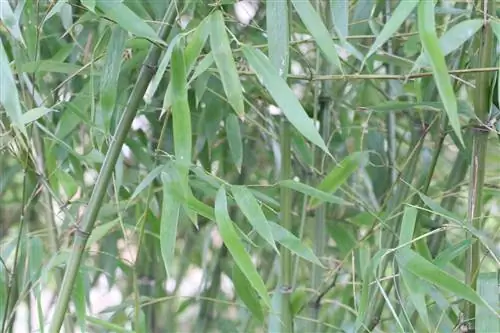
Tip:
Young, freshly planted specimens still have to develop their full winter hardiness. In the first three years you should therefore not leave them to winter without protection.
Conditionally hardy species
Bamboo species in hardiness zones 7 to 10 can also withstand sub-zero temperatures. But the higher the number of zones, the more sensitive they are to frost. A bamboo in zone 10 can barely survive temperatures just below zero. For these species it depends on where they grow. In mild areas, some are sufficiently winter hardy. In harsher regions, however, they need winter protection. Particularly varieties called Phyllostachys reticulata, formerly Phyllostachys bambusoides, are conditionally hardy:
- ‘Albovariegata’
- ‘Castilloni’
- ‘Castilloni variegata’
- ‘Castilloni inversa’
- ‘Castilloni-inversa-variegata’
- ‘Holochrysa’
- ‘Kawadana’
- ‘Marliacea’
- ‘Subvariegata’
- ‘Tanakae’
Even newcomers to this country such as the genera Chusquea, Pseudosasa, Sasa, Semiarundinaria and Shibataea have acceptable winter hardiness.
Tip:
Inquire about the exact winter hardiness of the selected species before purchasing. If the winter hardiness zone of the region and the winter hardiness of the bamboo species do not match, you can consider cultivating it in a bucket.
Non-hardy varieties
In times of globalization, bamboos are increasingly being offered that may look beautiful, but are not climate-friendly. Species of the genera Oldhamii and Marmora are all not hardy. If you don't want to do without them, you should definitely cultivate them in a bucket. The genus Sinobambusa can tolerate temperatures down to -6 °C. But it should also be better in the pot.
Outdoor winter protection
A bamboo that is not sufficiently hardy and every young specimen needs winter protection that includes the following measures:
- Protect root balls from autumn onwards, at the latest before the first frost
- build a border about 50 cm high
- made of rabbit wire, reed mats, etc.
- fill with leaves, straw or brushwood
- Bark mulch is unsuitable
- Wrap above-ground shoots with fleece
- alternatively put a jute sack over it
Note:
Do not wrap bamboo with plastic wrap as this is not breathable. Moisture can build up and cause the plant to rot.
Winter protection in a bucket
A bamboo specimen in a pot should not overwinter outside if possible. It doesn't matter how hardy the variety is otherwise. Because in a pot the roots are not as well protected from frost as in the garden bed. If the plant is to experience spring he althy, it must move to winter quarters in good time.
- take to winter quarters before the first frost
- A cold house is ideal
- Other cold and bright rooms are also suitable
- temperatures between 3 and 7 °C are optimal
Tip:
Be sure to avoid overwintering your bamboo too warmly. The plant is damaged because it cannot maintain the necessary winter rest.

Overwintering without winter quarters
If there is no suitable winter quarters available, a potted specimen may be able to survive the winter outside. A mild region or a mild winter as well as a variety with very good winter hardiness form a good starting point. The following measures are nevertheless essential:
- Place the bucket in a protected place
- z. B. on a warm house wall
- Place the pot on Styrofoam or wooden board
- wrap thickly in foil, fleece or jute
- Wrap shoots with fleece or jute
A very large specimen can be pruned first to make it more manageable and easier to winterize.
Care in winter
The evergreen bamboo does not grow in winter. But it continues to evaporate water, although less than in summer. In the bucket in the winter quarters, it must be watered regularly but cautiously. However, the soil in the pot should not be permanently moist so that the root ball does not rot. Even outdoors, the plant's moisture supply must be kept in mind. Most bamboos in the garden do not die of frostbite, but rather die of thirst. Especially after a long period of cold weather. While plants in pots can be watered at any time, outdoor specimens may only be provided with water on frost-free days. The water for irrigation should be lukewarm. There is no fertilization in winter.
Tip:
The ideal time for watering is not always easy to recognize. If a bamboo plant curls its leaves, this is a clear sign that it is lacking moisture. In this case, provide them with water immediately!
End hibernation
As soon as spring temperatures permit, winter protection measures will be removed again. Potted plants can be put out permanently from mid-May at the latest. Any damaged shoots are cut back.
Promote good winter hardiness
Every gardener can do their part to ensure that their bamboo plants become hardy quickly and sufficiently. Because the he althier a specimen is, the better it can withstand the cold.
- Plant in spring for good rooting
- choose a wind-protected, partially shaded location
- close to trees or a house wall
- loose soil with a slightly acidic pH value is ideal
- strengthen with needs-based care
- fertilize only until late summer

